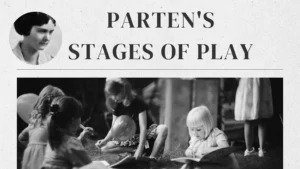Encountering a poorly preschool playground setup is a frustration many educators and parents share. These spaces often lack the creativity and engagement necessary to captivate young minds and bodies. An engaging preschool playground setup should stimulate physical activity, creativity, and social interaction among children. It must be safe, inclusive, and cater to the diverse needs of preschool-aged children. Incorporating natural elements, a variety of play equipment, and areas for different types of play can make a playground not only more attractive but also more beneficial for children’s development.
The question then becomes, how do we transform these spaces into vibrant hubs of activity that children are excited to explore?
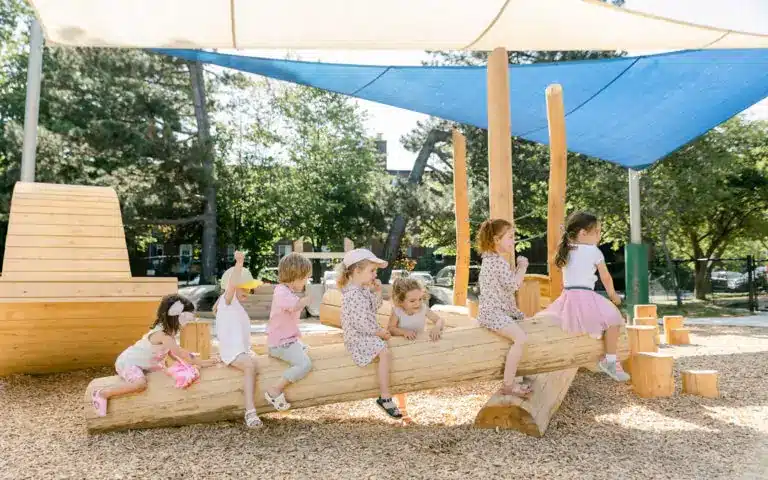
What are the essential components of an engaging preschool playground setup?
Creating an engaging preschool playground involves a thoughtful blend of components that cater to the diverse needs of young children, ensuring their playtime is not only enjoyable but also enriching and safe. Here are the essential elements that contribute to the success of preschool playground setup:
- Safety Features: The foundation of preschool playground setup is its commitment to safety. Implementing comprehensive safety measures, such as impact-absorbing surfaces beneath climbing structures and ensuring all equipment is age-appropriate, minimizes the risk of injuries. Playgrounds should also be designed with secure enclosures to keep children safely within the play area. Regular maintenance and adherence to established safety standards and certifications are crucial to prevent accidents and ensure a safe environment for all children.
- Interactive Play Equipment: Interactive play equipment is vital for stimulating children’s imagination and encouraging physical activity. Climbing structures, slides, and sensory panels provide varied physical challenges and sensory experiences, supporting motor skill development and cognitive growth. Choosing equipment that offers different levels of difficulty can accommodate children’s varying abilities and encourage them to explore new challenges safely. More information on selecting the right equipment can be found here.
- Natural Elements: Integrating natural elements into a preschool playground enhances children’s sensory experiences and connects them with the natural world. Elements like sand, water play areas, and gardens invite open-ended play, crucial for cognitive development and creativity. Natural features not only offer unique sensory experiences but also teach children about the environment and encourage respect for nature. Learn how to integrate these elements here.
- Shaded Areas: Providing shaded areas ensures that children can play comfortably without the risk of overheating or sunburn. Tips for creating effective shaded spaces are available here.
- Inclusive Design: An inclusive preschool playground setup ensures that children of all abilities can play, explore, and learn together. Features such as wheelchair-accessible ramps, sensory play elements accessible from various heights, and equipment that supports diverse physical needs make the playground a welcoming space for everyone. Inclusive design fosters a sense of belonging and encourages empathy and social skills among children.
- Educational Elements:
- Incorporating educational elements into the playground turns playtime into an opportunity for learning. Alphabet boards, counting games, and themed play areas can subtly introduce academic concepts in an engaging manner. These elements support early literacy and numeracy skills, preparing children for more formal education settings while they play.
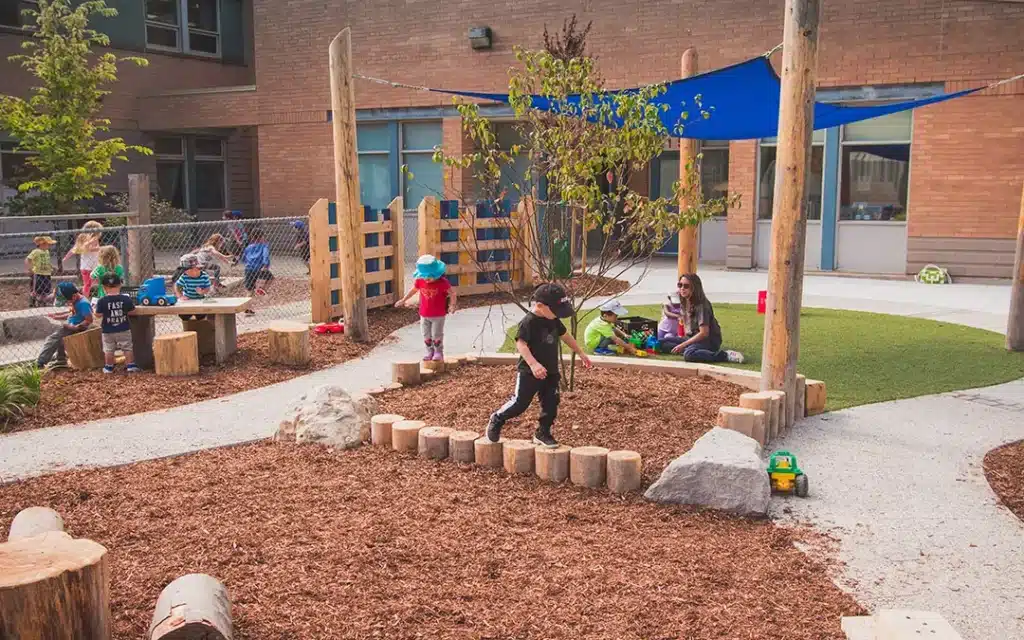
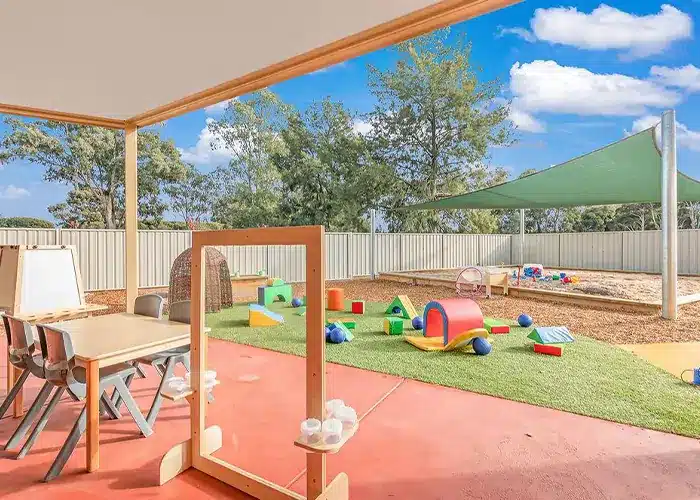
Understanding Children’s Gross Motor Skills and Play in Preschool Playground
In preschool playground, fostering children’s gross motor skills through play is essential. Gross motor skills, which involve the use of large muscles for activities like running, jumping, and climbing, are critical for children’s overall development. A well preschool playground setup should provides a variety of equipment and spaces that encourage the development of these skills in a fun, engaging way.
Climbing frames, for example, challenge children to use their whole body, enhancing their strength and coordination. Swings promote balance and help children understand spatial awareness, while slides offer a joyful way to learn about gravity and control. These play experiences are vital, not just for physical development but also for building confidence and social skills as children interact and play together.
Incorporating diverse play structures that cater to different gross motor skills ensures that a preschool playground is not only a place of enjoyment but also a dynamic environment for growth and learning. By prioritizing these developmental needs, preschool playground setup can support children in building a strong foundation for future physical activities and sports, all within the context of playful exploration and discovery.
How Can Preschool Playground Design Support Children’s Development?
A thoughtfully preschool playground setup is a crucial environment for supporting the multifaceted development of young children. By carefully selecting and organizing the playground’s components, designers can create a space that nurtures physical, cognitive, social, and emotional growth. Here’s how a well-planned preschool playground setup can contribute to each of these developmental areas:
Physical Development
The physical layout and equipment in a preschool playground are instrumental in promoting gross motor skills such as running, jumping, climbing, and balancing. Structures like slides, swings, and climbing frames encourage children to engage in vigorous play, which is essential for building muscle strength, coordination, and overall physical health. Additionally, incorporating elements that require fine motor skills, such as interactive panels or small climbing holds, supports the development of hand-eye coordination and dexterity.
Cognitive Development
A preschool playground setup can also serve as a rich resource for cognitive development. Playgrounds designed with problem-solving features, such as maze-like structures or puzzles, challenge children’s thinking and encourage them to find solutions. Educational elements, such as counting steps or alphabet-themed play panels, integrate learning into play, making the acquisition of new knowledge enjoyable and natural. This integration of play and learning stimulates curiosity and fosters a love for exploration.
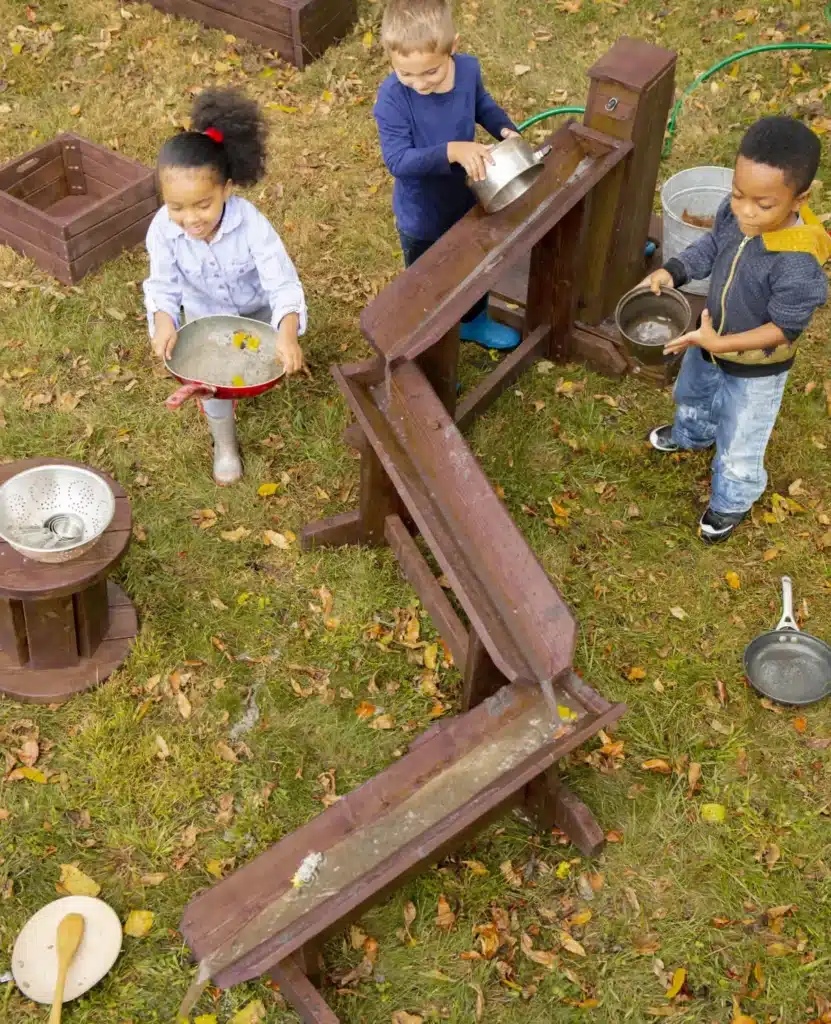
Social and Emotional Development
Social interaction is a significant aspect of play in preschool playground. Designing spaces that encourage cooperative play, such as sandboxes or playhouses, provides children with opportunities to develop communication skills, negotiate roles, and learn to share and collaborate. These interactions are crucial for building empathy, understanding social cues, and developing friendships. Moreover, playgrounds offer a safe space for children to express themselves, face challenges, and experience both successes and failures, which are vital for building resilience and self-esteem.
Creativity and Imagination
Preschool playground setup that include open-ended play elements, such as water play areas or loose parts that can be moved and reconfigured, support creativity and imagination. These types of play environments allow children to invent their own games and scenarios, pushing the boundaries of their imagination. A playground that stimulates creative play is not just a place for physical activity; it’s a canvas for the imagination, where children can dream up new worlds and adventures.
Inclusivity
An inclusive playground design ensures that children of all abilities have the opportunity to play and develop together. Features such as accessible play equipment and sensory play areas cater to a diverse range of needs, promoting an environment of equality and respect. An inclusive preschool playground setup teaches children about diversity and inclusion from a young age, fostering a sense of community and belonging for every child.
In summary, the design of a preschool playground plays a critical role in supporting children’s holistic development. By creating an environment that encourages physical activity, cognitive challenges, social interaction, creativity, and inclusivity, a playground can become a foundational element in a child’s early years, laying the groundwork for a lifetime of learning and growth.
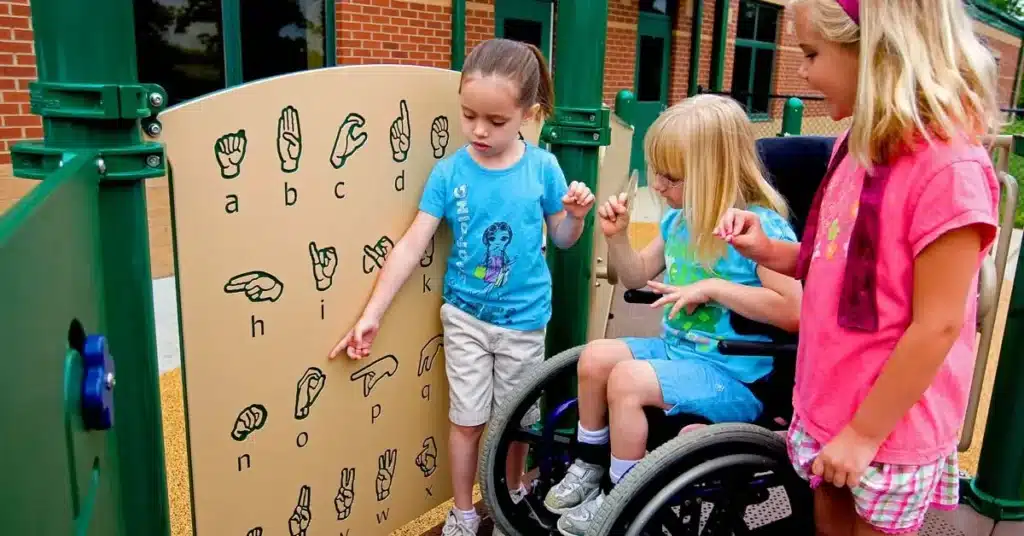
Playground Regulations and Guidelines
Adhering to playground regulations and guidelines is essential for the safety and enjoyment of children in preschool playgrounds. These rules ensure that playgrounds are designed, installed, and maintained to prevent injuries and foster a safe environment for play.
Safety standards, such as those set by the Consumer Product Safety Commission (CPSC) and ASTM International, outline specific requirements for playground equipment and surfacing. They focus on minimizing the risk of falls and injuries by specifying the use of safe materials, proper equipment spacing, and the installation of impact-absorbing surfaces.
Inclusivity is also a key aspect of playground design. The Americans with Disabilities Act (ADA) mandates that playgrounds be accessible to children of all abilities, promoting an environment where every child can participate in play activities. This includes providing accessible routes, equipment, and surfaces.
Maintenance and regular safety inspections are crucial to identify and rectify potential hazards, such as worn-out equipment or loose parts. Playground operators should establish a routine maintenance schedule based on the manufacturer’s recommendations and safety standards.
Educating staff and caregivers on playground safety and supervision is vital. Proper training helps prevent accidents and ensures a quick and effective response in case of an emergency.
In summary, following playground regulations and guidelines is critical for creating a safe and inclusive preschool playground setup. These standards protect children by ensuring that playgrounds are well-designed, properly maintained, and accessible to all.
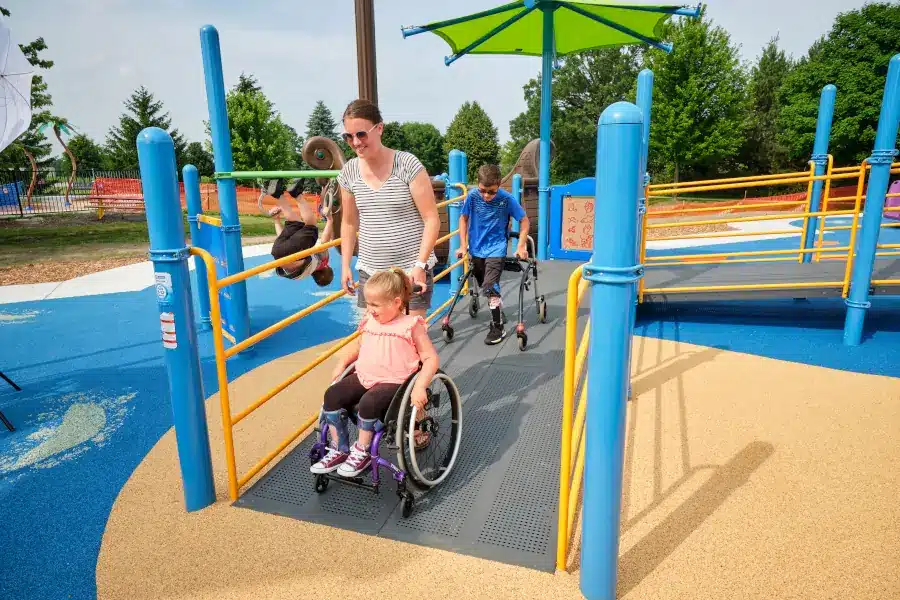
Creating Your Playground with a Variety of Play Equipment
When it comes to assembling a preschool playground setup, diversity in play equipment is not just beneficial—it’s essential. A well-rounded selection of playground features can significantly enhance children’s physical, cognitive, and social development. Here’s how to create a preschool playground that captures the essence of variety and enrichment.
Climbing Structures and Slides: These are playground staples for a reason. Climbing structures challenge children physically, promoting strength, coordination, and confidence. Slides add an element of thrill and teach basic principles of gravity and motion, all while enhancing spatial awareness.
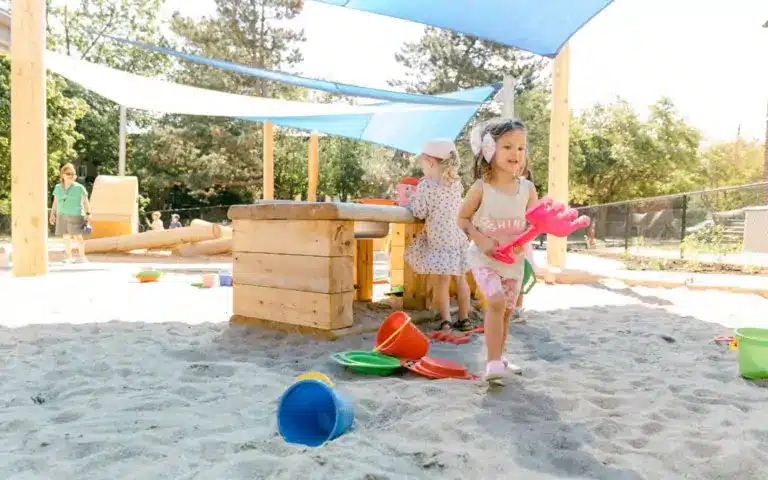
Swings: Swing sets are pivotal in aiding balance and sensory integration. The back-and-forth motion is soothing and offers a unique sensory experience, making swings an indispensable part of preschool playground setup.
Interactive Play Panels: Incorporating interactive play panels can turn a simple playground into a cognitive development hub. These panels engage children in problem-solving activities, support fine motor skill development, and stimulate imaginative play.
Imaginative Play Spaces: Equipment like playhouses, sandboxes, and water play areas foster imaginative and social play. They encourage children to explore different roles, learn about cooperation, and develop their storytelling skills. These areas are crucial for social development and creative thinking.
Safety and Surfacing: Choosing the right surfacing is as important as selecting the equipment itself. Options like rubber mulch, poured-in-place rubber, or synthetic turf provide safe landing zones, reducing the risk of injuries from falls. Safety surfacing is a foundational aspect of playground design that supports the variety of play equipment above.
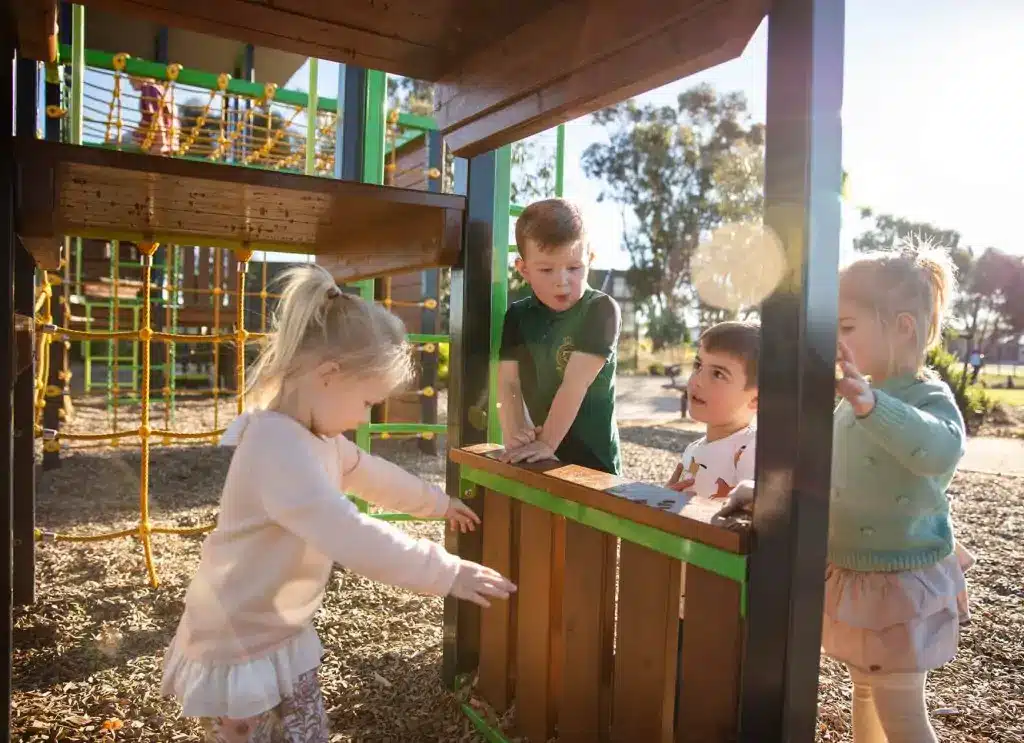
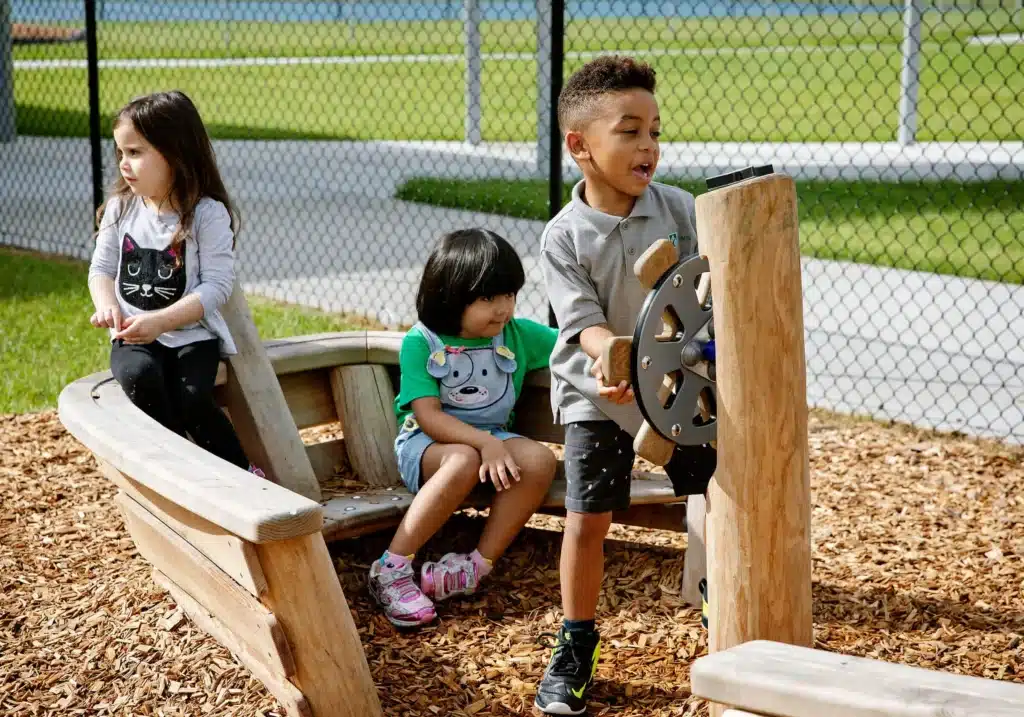
Creating a preschool playground with a varied selection of equipment offers a world of exploration and learning opportunities for children. It’s about designing a space that nurtures development across all domains, ensuring each child finds something that challenges, engages, and delights them. Through thoughtful planning and a commitment to diversity in play options, we can craft enchanting playgrounds that serve as the backdrop for countless childhood memories.
Options for Your Ideal Preschool Playground Setup
The ideal preschool playground setup involves selecting the right mix of equipment and features that cater to the developmental needs of young learners. From fostering physical skills to encouraging imaginative play, the options available can transform any outdoor area into a dynamic and engaging environment for children. Here are some key considerations to help you design your perfect preschool playground.
Safety First: Safety should be the top priority in any playground design. Opt for equipment that meets current safety standards, and choose surfacing materials like rubber mulch or poured-in-place rubber to cushion falls and prevent injuries. Regular maintenance and safety inspections are also crucial to ensure a secure play environment.
Age-Appropriate Equipment: Selecting play equipment that is suitable for the preschool age group is essential. Equipment should challenge children without overwhelming them, promoting physical, cognitive, and emotional development. Features like low climbing structures, slides with gentle slopes, and small-scale swings are ideal for young children.
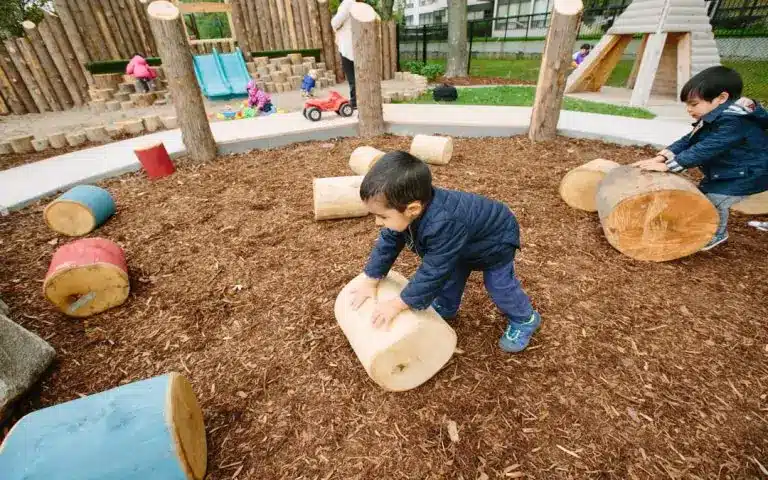
Variety in Play Experiences: To cater to different interests and developmental needs, include a variety of play experiences in your playground design. Climbing structures, balance beams, sandbox areas, and interactive play panels can provide a wide range of physical and cognitive challenges.
Natural Elements: Integrating natural elements into the playground can enhance children’s sensory experiences and connection to the environment. Consider adding features like a garden area, water play stations, and natural shade structures to create a more inviting and relaxing space.
Shade and Seating: Protect children from the sun and provide comfortable seating areas for caregivers. Shade structures, trees, and benches are important features that make the playground enjoyable for everyone.
By carefully considering these options and focusing on the specific needs of preschool-aged children, you can create an ideal preschool playground that is safe, inclusive, and full of opportunities for exploration and learning.
Benefits of Including Natural Elements in Preschool Playground Setup
Incorporating natural elements into preschool playground setup offers a multitude of benefits that enhance the physical, cognitive, and emotional development of young children. Integrating nature into play spaces goes beyond aesthetic appeal, providing rich sensory experiences and opportunities for exploration that traditional playground equipment cannot replicate. Here are some key advantages of including natural elements in preschool playground setup.
Sensory Development: Natural playgrounds engage all five senses. The textures of sand, leaves, and bark; the sounds of rustling leaves and chirping birds; the sights of vibrant flowers and greenery; the smells of fresh earth and blooming plants; and even the taste of edible plants (under supervision) offer diverse sensory experiences that stimulate learning and exploration.
Encourages Imagination and Creativity: Natural elements such as logs, rocks, and water features can be transformed into anything in a child’s imagination—from pirate ships to castles. This unstructured form of play encourages creativity and problem-solving skills, allowing children to create their own narratives and games.
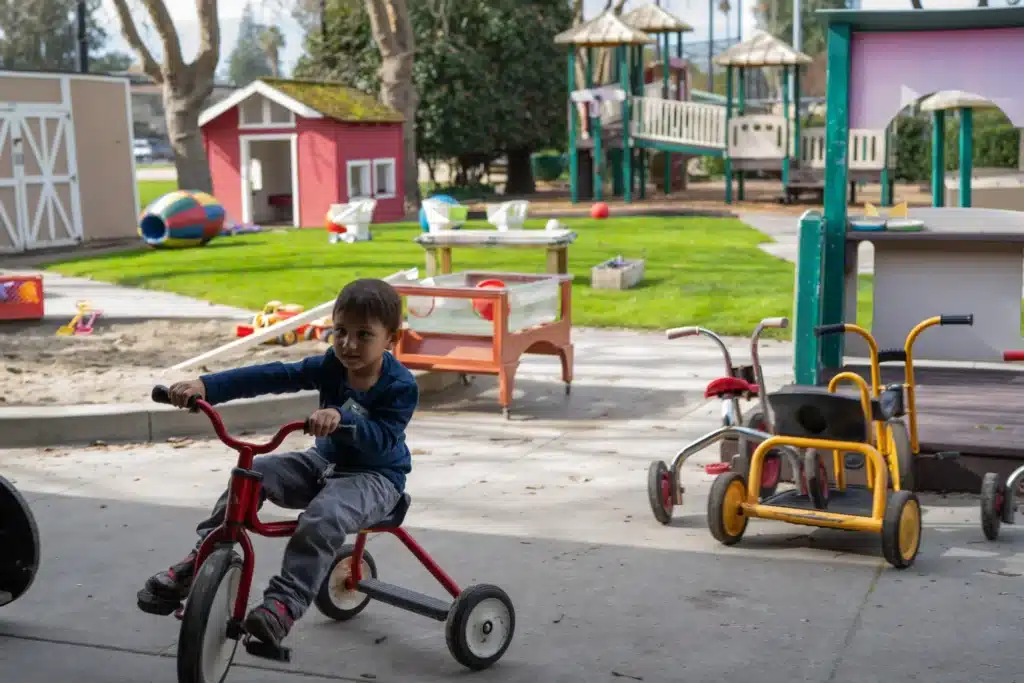
Physical Development: Playing in natural environments challenges children physically in ways that traditional playgrounds may not. Climbing trees, balancing on logs, and navigating uneven surfaces improve balance, coordination, and physical strength. These activities also encourage risk-taking and help children learn to assess and negotiate risks.
Emotional and Mental Health Benefits: Nature has a calming effect on children, reducing stress and promoting well-being. Natural playgrounds can be peaceful havens where children feel more relaxed, happy, and connected to the environment. This connection to nature can foster a sense of stewardship for the environment as they grow.
Promotes Social Interaction: Natural playgrounds often require more cooperative play than traditional playgrounds. Building a dam in a water stream, creating a fort from branches, or playing imaginative games in a wooded area encourage children to work together, share ideas, and develop social skills.
Educational Opportunities: Natural playgrounds offer endless opportunities for hands-on learning. Children can learn about plant life cycles, observe insects and birds, and explore the principles of physics and geography through play. These real-world learning experiences are invaluable and cannot be easily replicated in a traditional classroom setting.
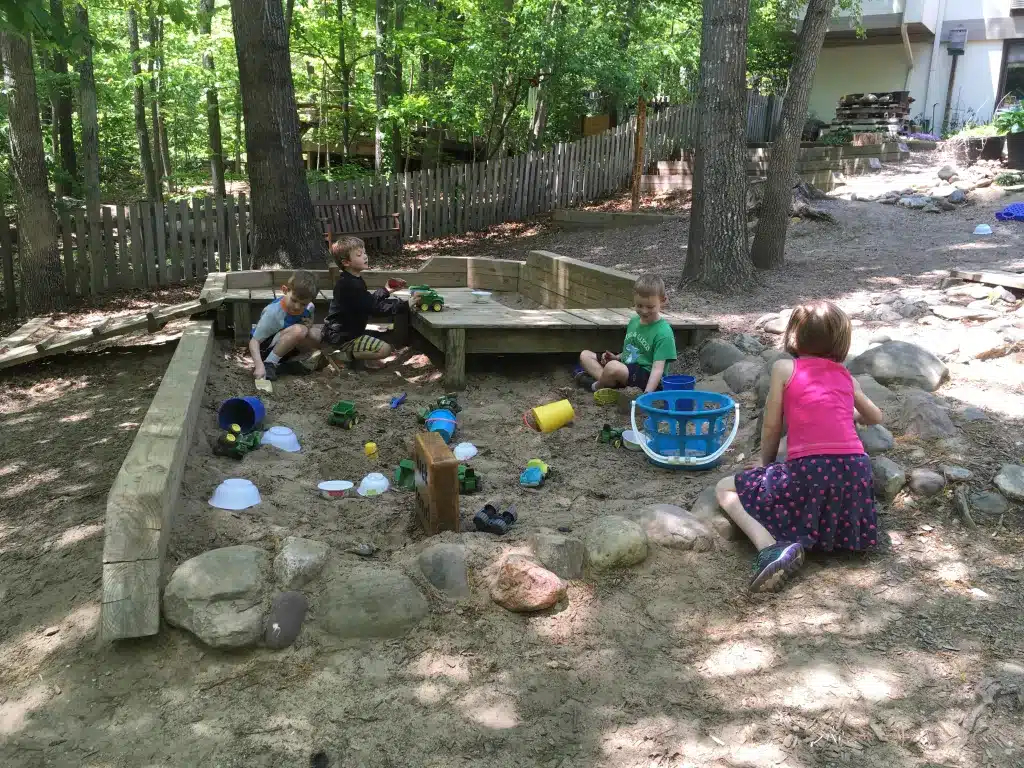
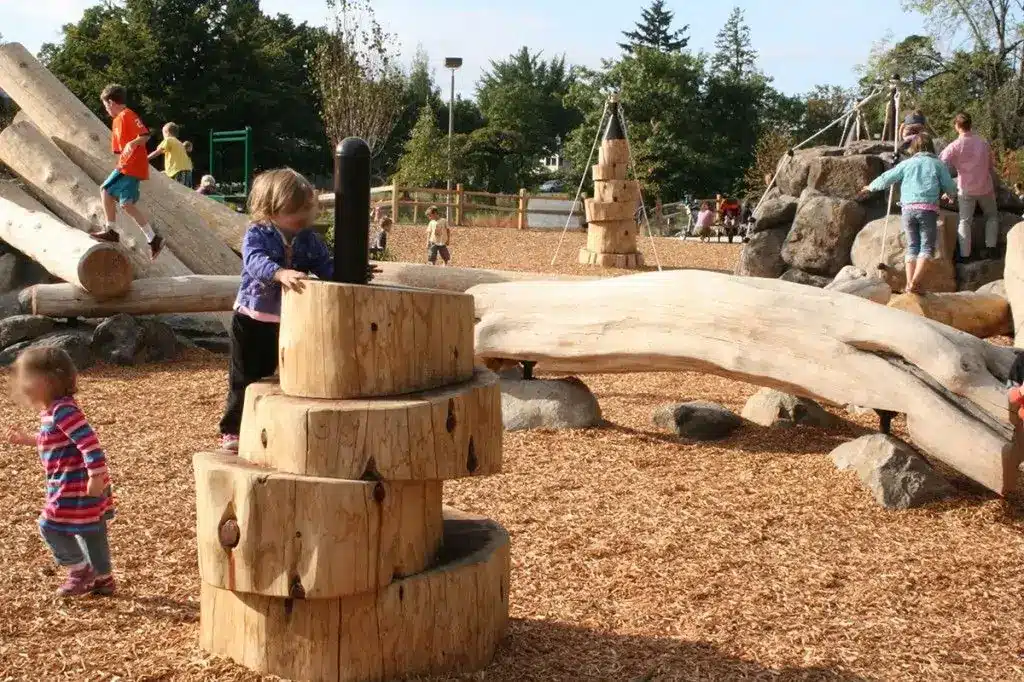
How Can Preschool Playground Setup to Encourage Inclusivity?
A inclusive preschool playground setup is about creating spaces that welcome and engage all children, regardless of their physical, sensory, or cognitive abilities. It’s a thoughtful process that ensures every child can participate, explore, and enjoy the benefits of play alongside their peers. Here are several strategies for fostering inclusivity in preschool playground setup design:
Universal Design Principles
Applying universal design principles means creating playgrounds that are accessible and usable by everyone to the greatest extent possible. This involves incorporating wide, smooth pathways that accommodate wheelchairs and strollers, ensuring that play structures have low and high elements to engage children at different heights, and creating sensory-rich environments that stimulate all children, including those with sensory processing disorders.
Varied Play Experiences
Inclusivity in playground design also means providing a variety of play experiences that cater to different interests and developmental levels. This can include quiet areas for children who may get overwhelmed by too much stimulation, imaginative play spaces that encourage social interaction among children of varying abilities, and physical play equipment that is adaptable for children with different mobility needs.
Accessible Play Equipment
Choosing play equipment that is accessible to children with disabilities is crucial for an inclusive preschool playground setup. This includes swings with harnesses for children who need additional support, tactile elements for children with visual impairments, and ground-level play features that are accessible to children who use wheelchairs or mobility aids. Ensuring that there are no barriers to accessing any part of the playground allows all children to participate fully in play activities.
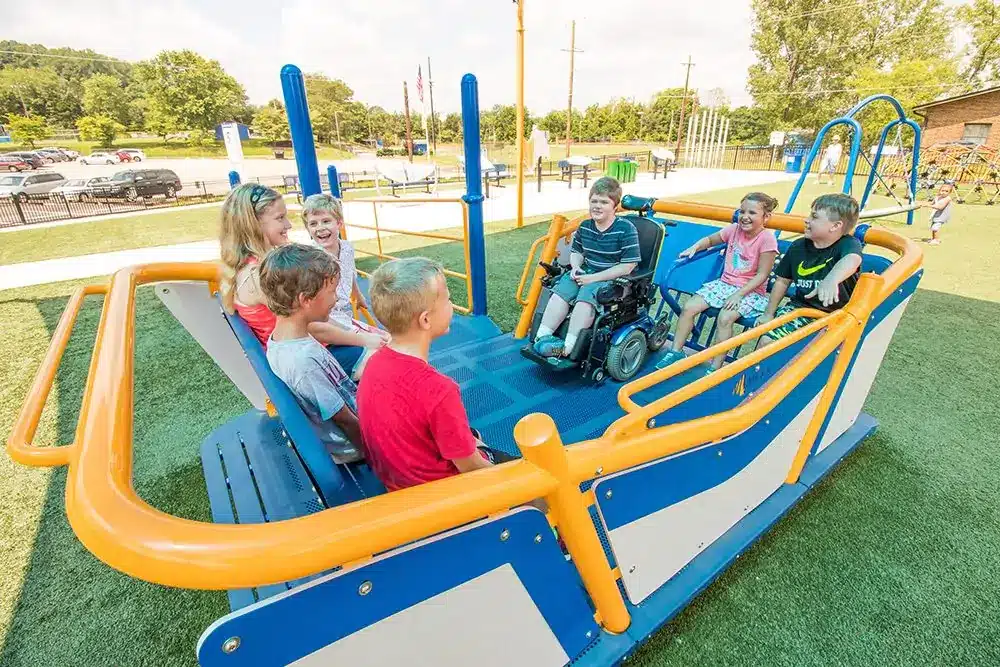
Sensory Considerations
Inclusive playgrounds should offer a range of sensory experiences without overwhelming children who may be sensitive to certain stimuli. This can be achieved by including natural elements like water and sand for tactile play, offering quiet zones for children needing a break from sensory input, and integrating sound-producing elements like musical instruments that can be enjoyed by children with hearing impairments or those who find joy in creating sound.
Social Inclusion Zones
Designing areas that naturally encourage cooperation and social interaction can help foster friendships and understanding among children of diverse backgrounds and abilities. This might involve creating communal sandbox areas, cooperative water play stations, or group seating arrangements that invite conversation and shared activities.
Safety and Comfort
Ensuring the safety and comfort of all children is a fundamental aspect of inclusive preschool playground ssetup. This includes selecting materials that are safe and non-toxic, providing ample shaded areas to protect against sun exposure, and creating clear sight lines so caregivers can easily supervise children from a distance. Comfort features like benches and seating areas allow families and caregivers to be part of the playground experience, promoting a sense of community and belonging.
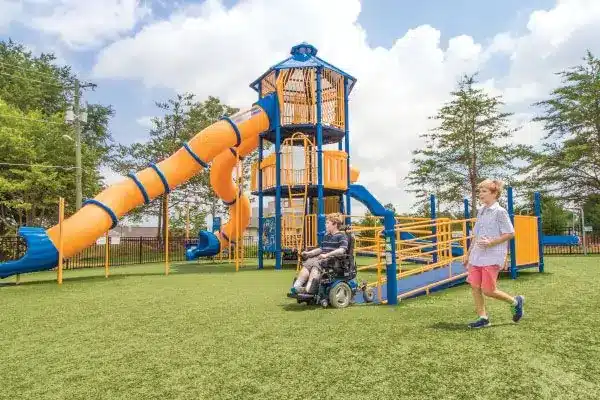
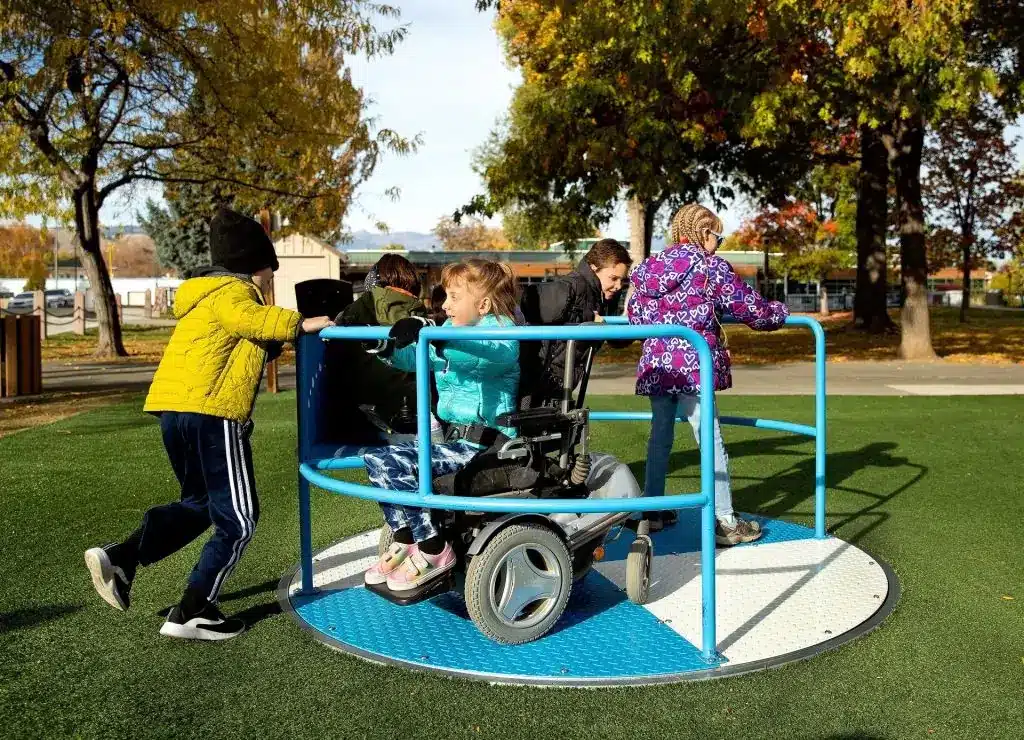
How to Organize an Early Childhood Playground
Organizing a preschool playground effectively involves a strategic approach that thoughtfully combines safety, inclusivity, and a broad spectrum of developmental and play opportunities. Creating a welcoming space for all children is paramount, featuring various zones tailored to different activities. These include active play areas with climbing structures and slides to stimulate gross motor skills, imaginative spaces for creative and social play, and quiet corners for relaxation and individual exploration.
Incorporating natural elements like sand, water, and greenery enriches sensory experiences and connects children with the natural world. This not only enhances their learning but also fosters an appreciation for the environment. Accessibility is crucial, ensuring that the playground accommodates children of all abilities, with features that support inclusivity and allow every child to participate fully in play activities.
Safety is always a top priority, with carefully selected equipment placed on appropriate surfacing to minimize injuries. The layout is designed to give caregivers clear visibility, ensuring children are safe at all times. Additionally, the playground’s design should be flexible, able to adapt to the evolving needs and interests of growing children.
Engaging the community in the planning process is vital, as it ensures the playground meets the unique needs of its users. This collaborative approach creates a space that not only fosters development and joy but also nurtures a sense of belonging among the preschoolers it serves, making the playground an integral part of their early learning experience.
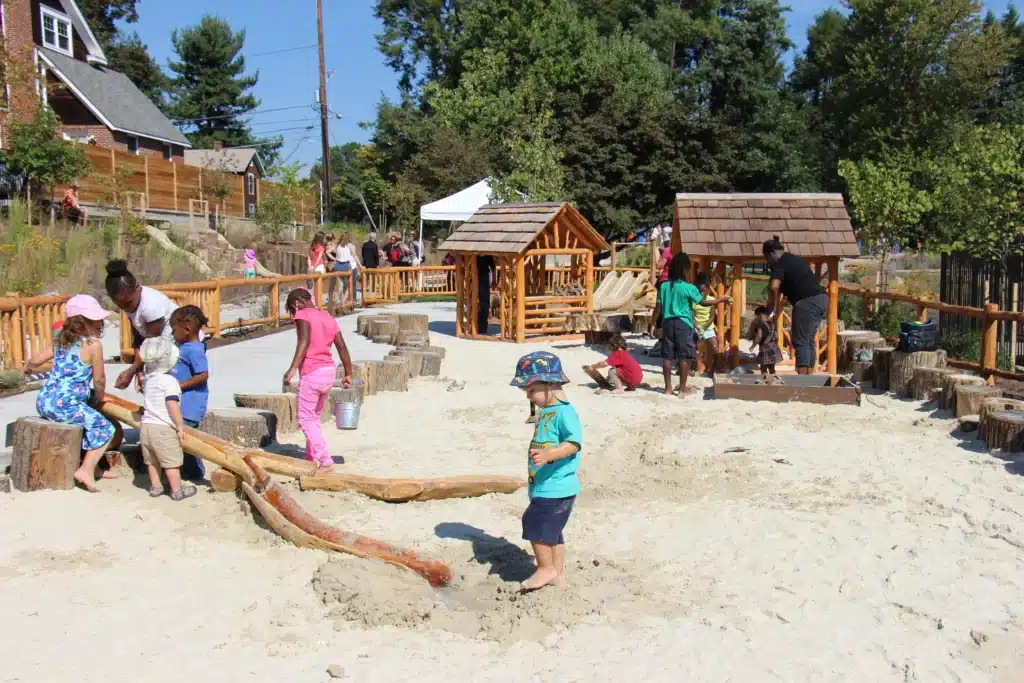
Tips for a Successful Preschool Playground Setup Process
- Get Professional Advice on Playground Design: Engaging with playground design professionals or landscape architects can provide valuable insights into creating a safe, engaging, and developmentally appropriate preschool playground. They can help navigate regulations, select appropriate equipment, and ensure the playground meets the community’s needs.
- Prioritize Health and Safety: The safety of the children should always be the primary concern in playground design. This includes selecting age-appropriate equipment, ensuring proper surfacing to cushion falls, and designing the layout to prevent overcrowding and ensure clear sightlines for supervisors. Regular maintenance checks to identify and fix hazards are also crucial.
- Consider Aesthetics and Themes: A playground that is visually appealing and follows a particular theme can significantly enhance children’s imaginative play and engagement. Themes can be educational, natural, or fantasy-based, providing a backdrop that sparks creativity and exploration. Additionally, aesthetically pleasing designs can make the playground a community landmark.
- Know the Scale You’re Working With: Understanding the size and dimensions of the available space is essential for optimal playground design. This knowledge helps in efficiently organizing play areas, circulation paths, and ensuring there is enough room for the intended number of children. It also aids in selecting appropriately sized equipment and planning for future expansions or additions.
- Consider the Play Value of the Playground: The play value refers to the potential of a playground to offer various play opportunities that stimulate physical, cognitive, social, and emotional development. Incorporating a mix of play structures that promote active play, sensory experiences, imaginative scenarios, and social interaction can create a rich play environment that appeals to children of different interests and abilities.
- Evaluate Your Budget: Having a clear understanding of your budget from the outset helps in making informed decisions about the scope of the playground project. It influences the choice of materials, the quantity and type of play equipment, and the extent of custom designs. Planning for the long-term costs of maintenance and possible upgrades is also important for sustaining the playground’s appeal and safety over time.
- Invest in Quality Equipment: Selecting high-quality, durable playground equipment is vital for the longevity of the playground. Quality equipment withstands the rigors of daily use, weather conditions, and reduces the likelihood of injuries. Investing in quality also means selecting equipment that is made from sustainable materials and designed with inclusivity in mind, ensuring that the playground can be enjoyed by every child.
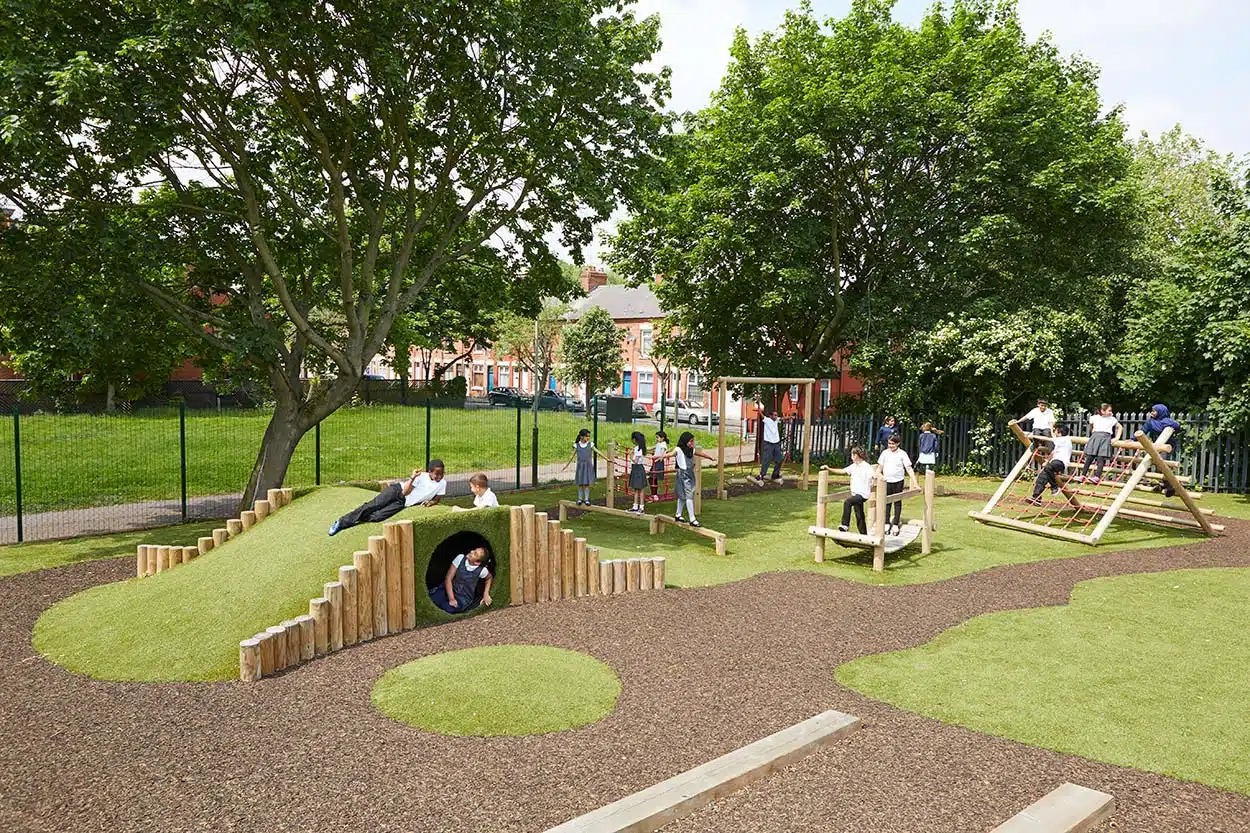
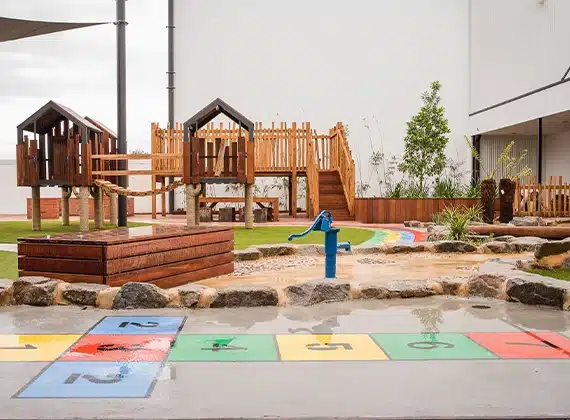
The preschool playground setup is a complex but deeply rewarding process that impacts significantly more than just the aesthetics of a play area. It delves into crucial aspects of safety, functionality, and inclusivity, ensuring that the space is not only beautiful but also promotes the well-being and development of young children.
By prioritizing health and safety, embracing cohesive aesthetics and themes, understanding the project’s scale, ensuring high play value, carefully evaluating the budget, and investing in quality equipment, educators and designers can create enchanting outdoor environments. These playgrounds become vibrant hubs of community life, where children embark on adventures, make discoveries, and forge friendships.
At the heart of every successful playground design is a commitment to enriching the lives of children. It’s about providing a safe, stimulating, and inclusive environment where they can explore, grow, and flourish. A well-thought-out preschool playground setup is a testament to the community’s investment in its youngest members, showcasing a dedication to nurturing healthy, happy, and well-rounded individuals.








